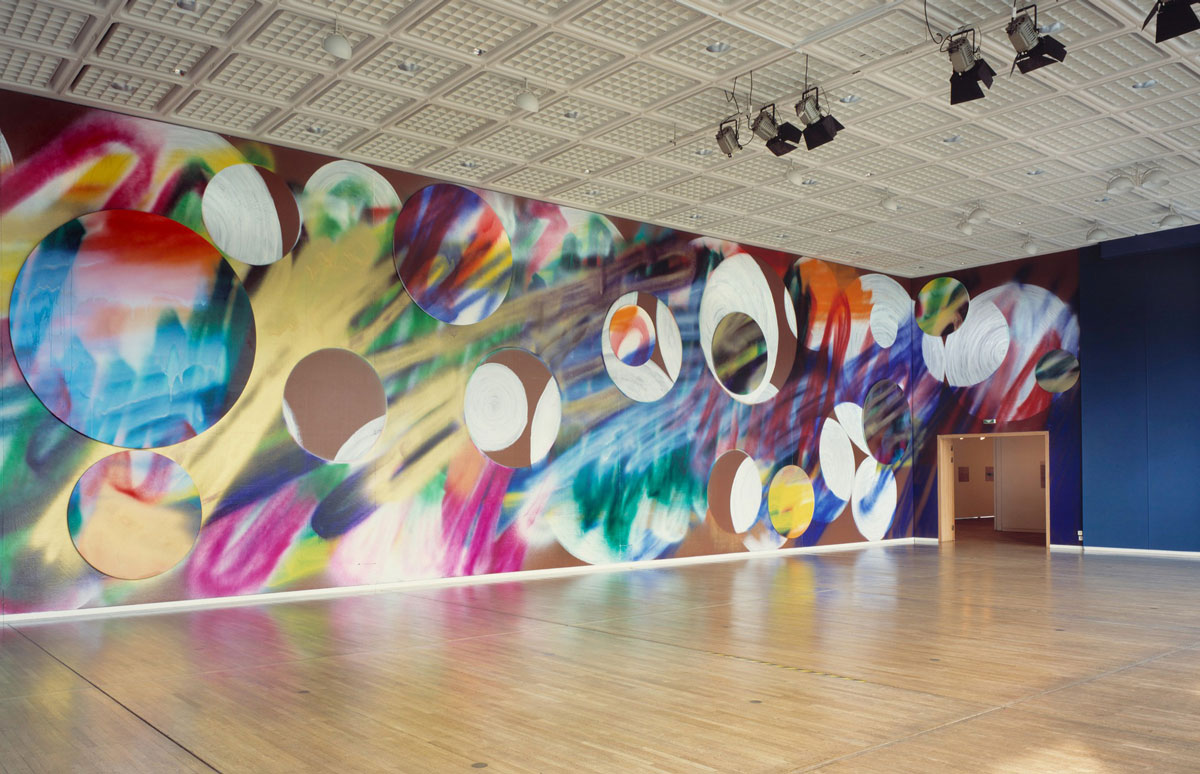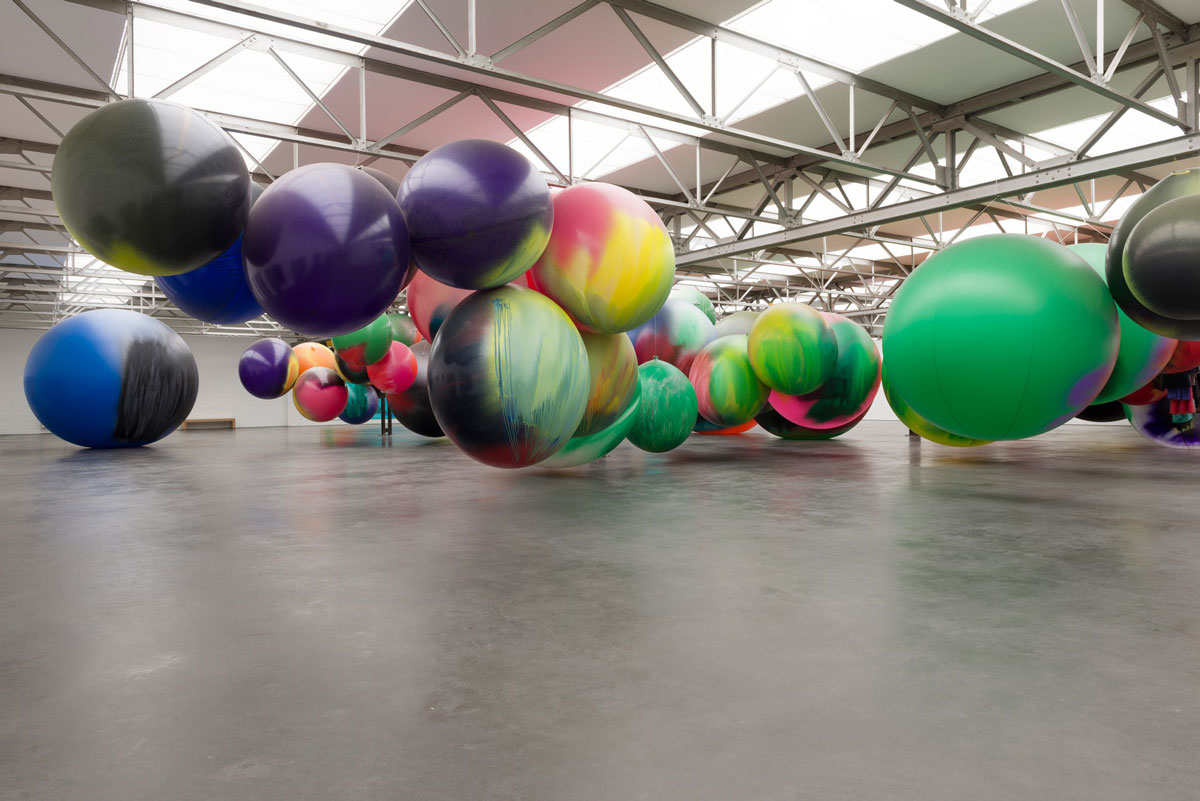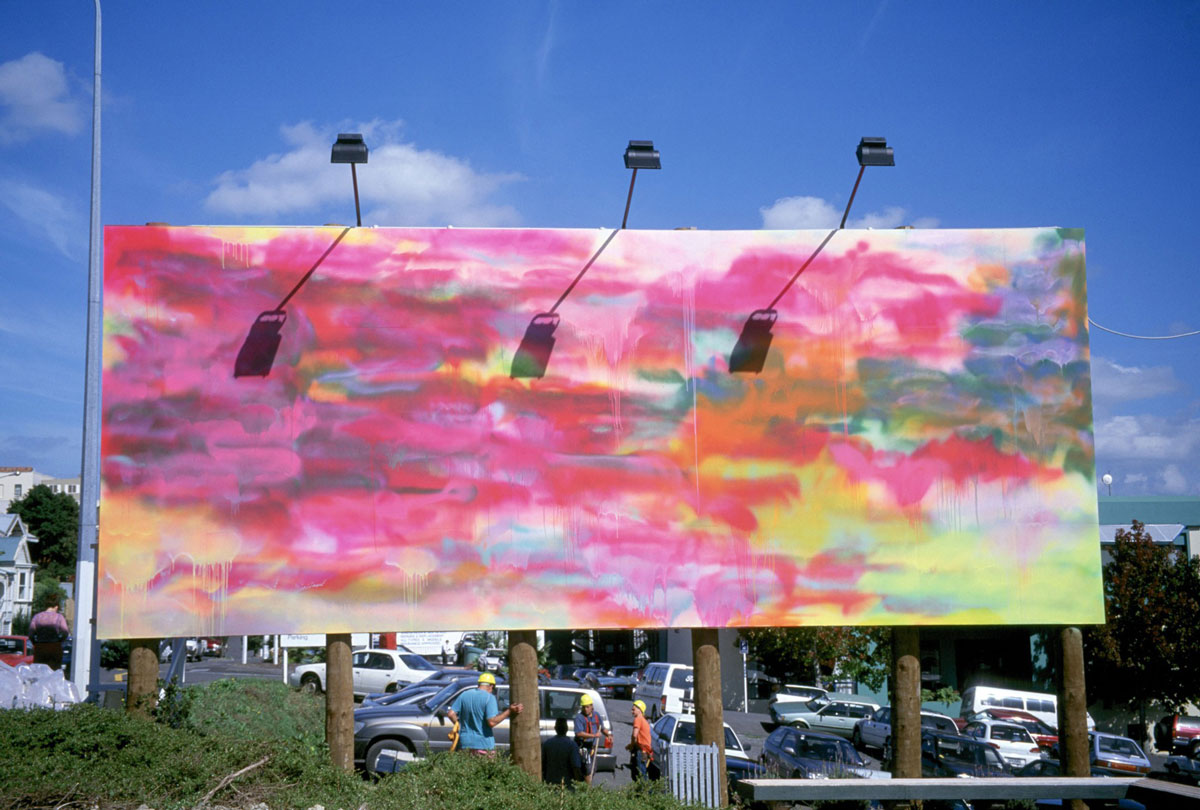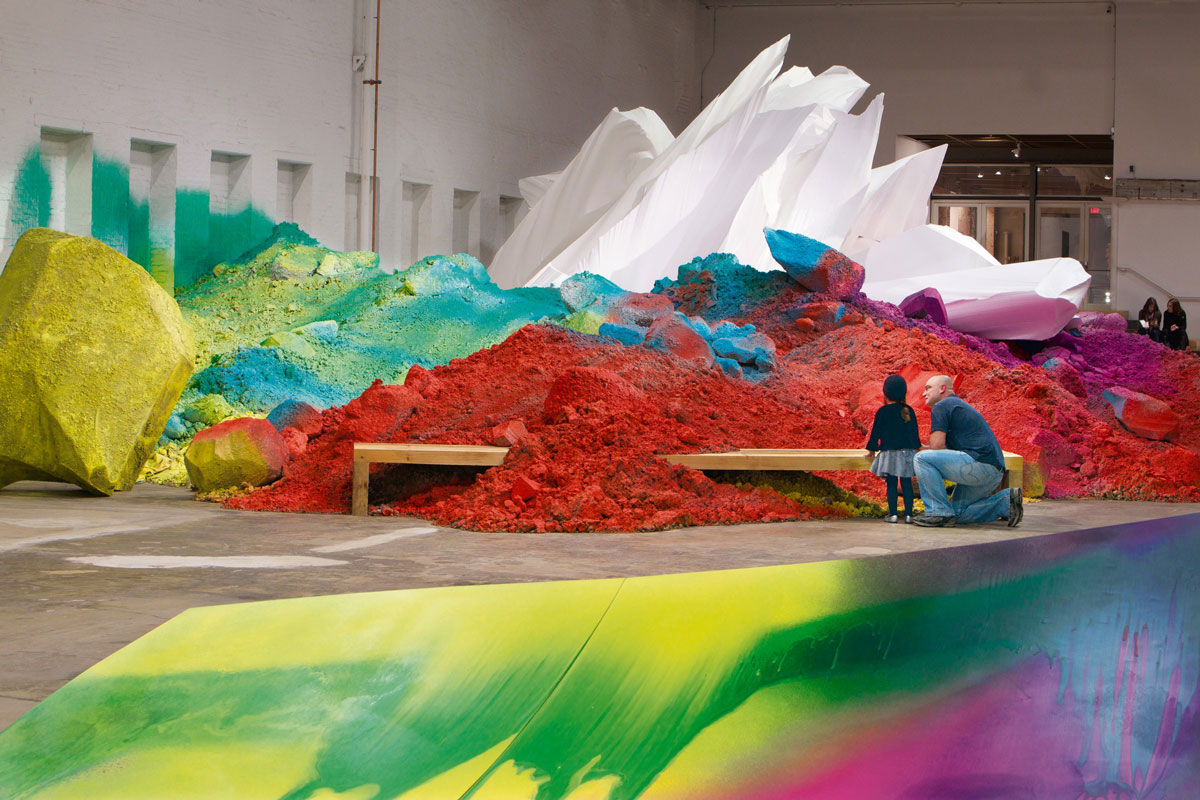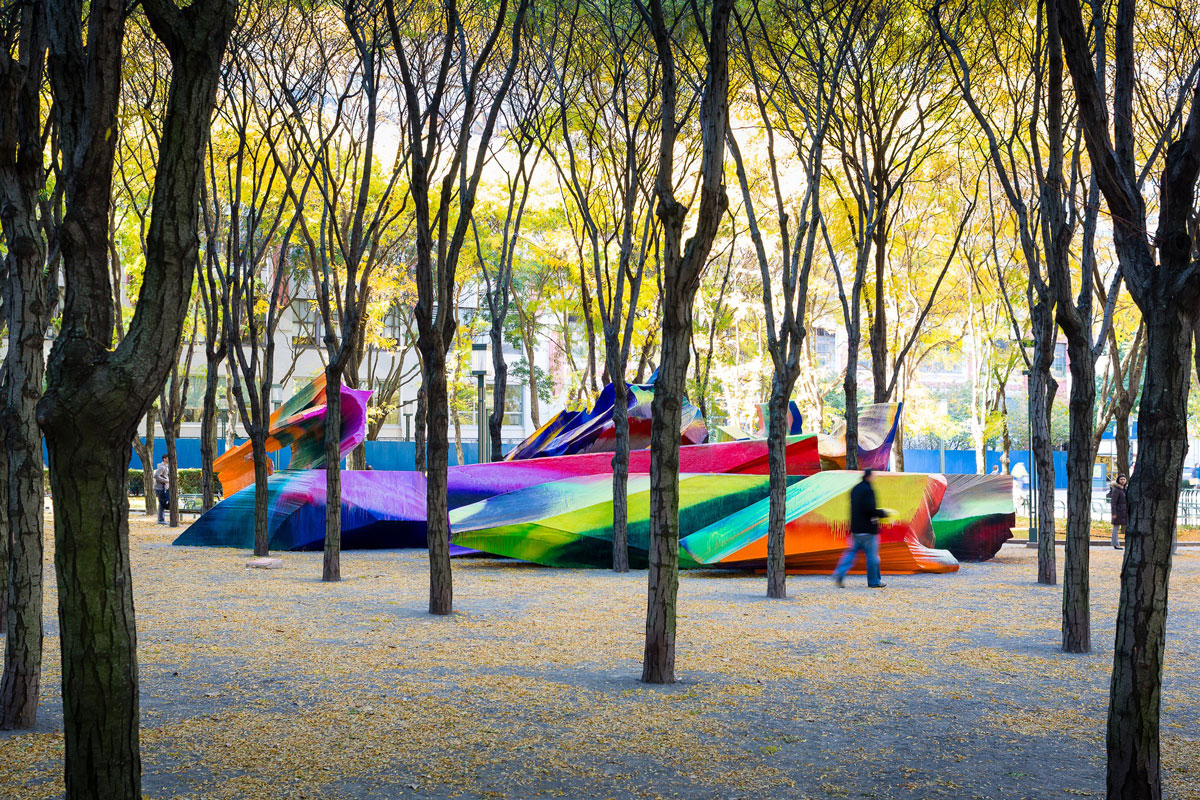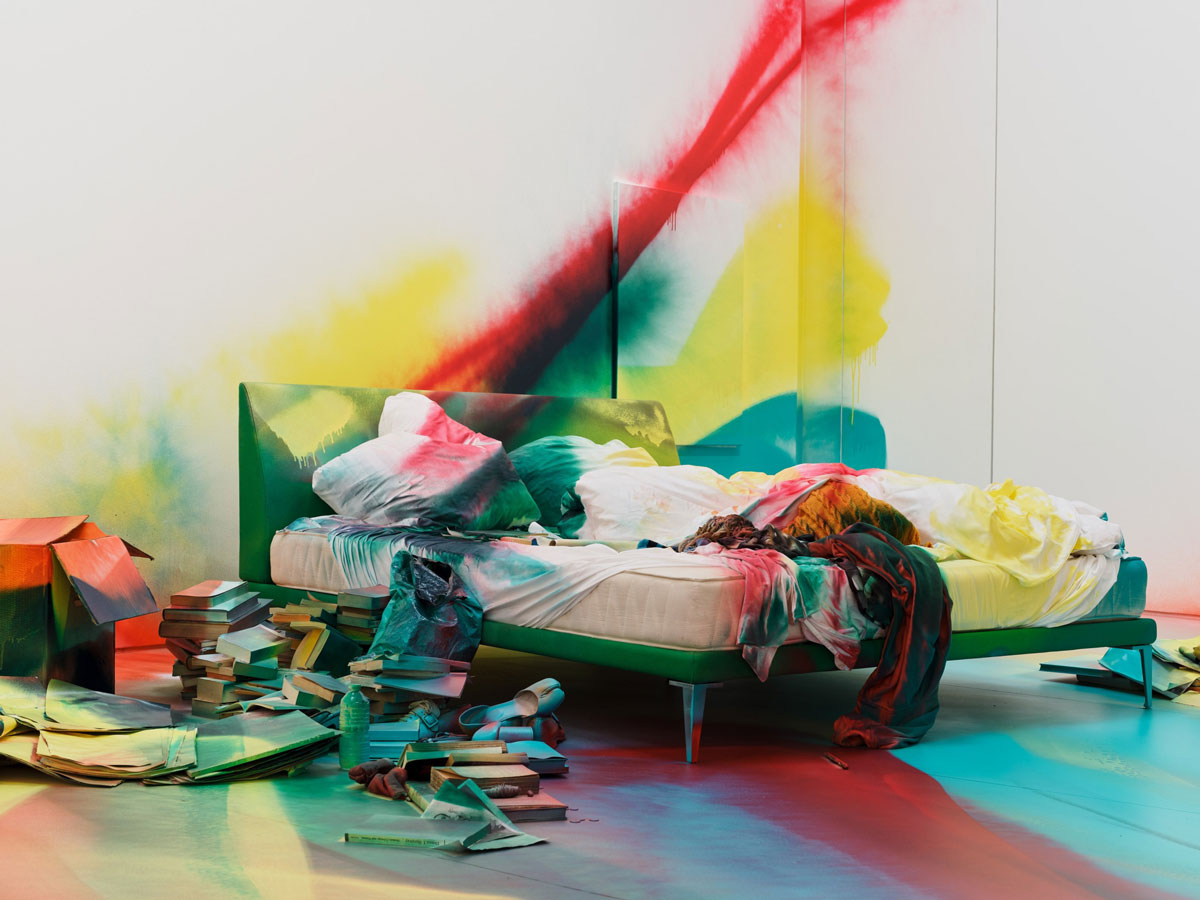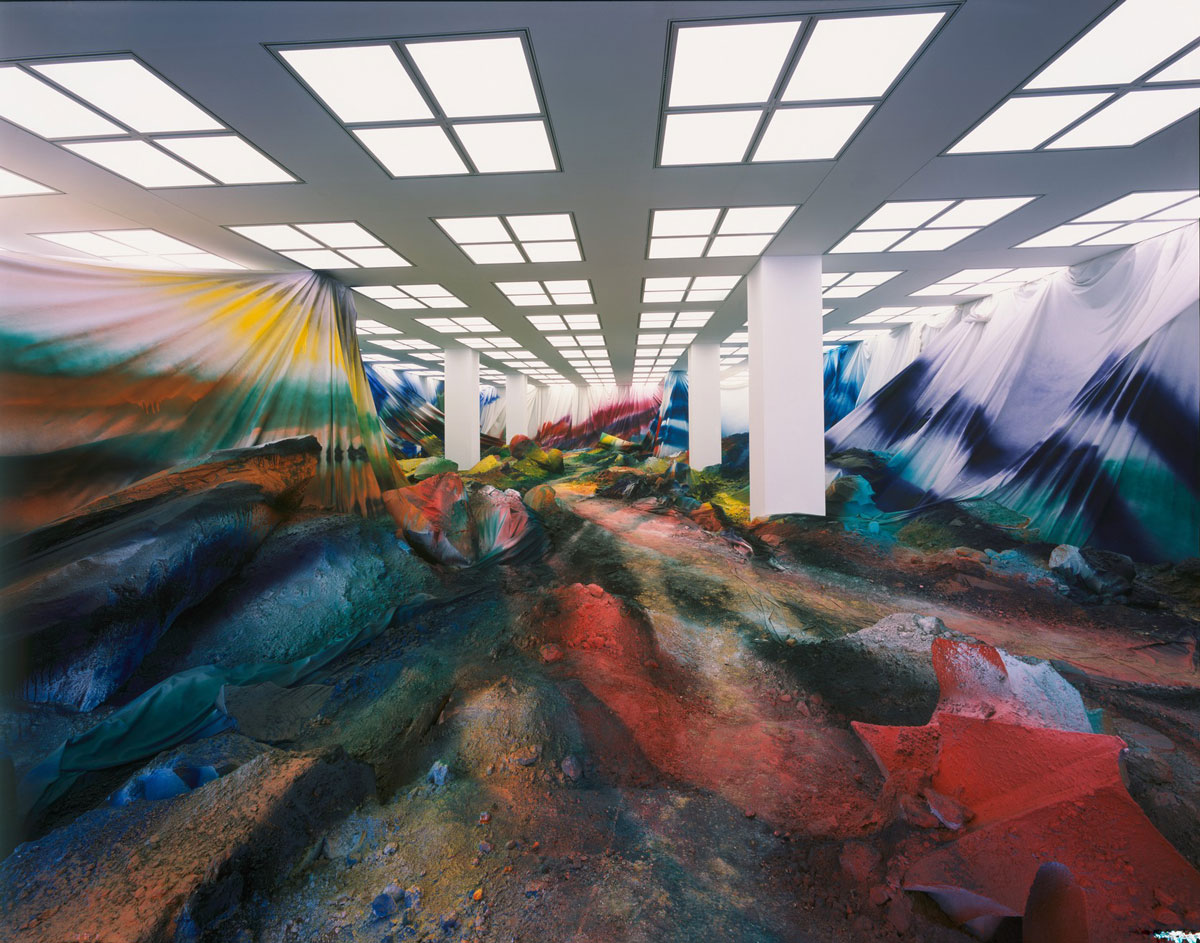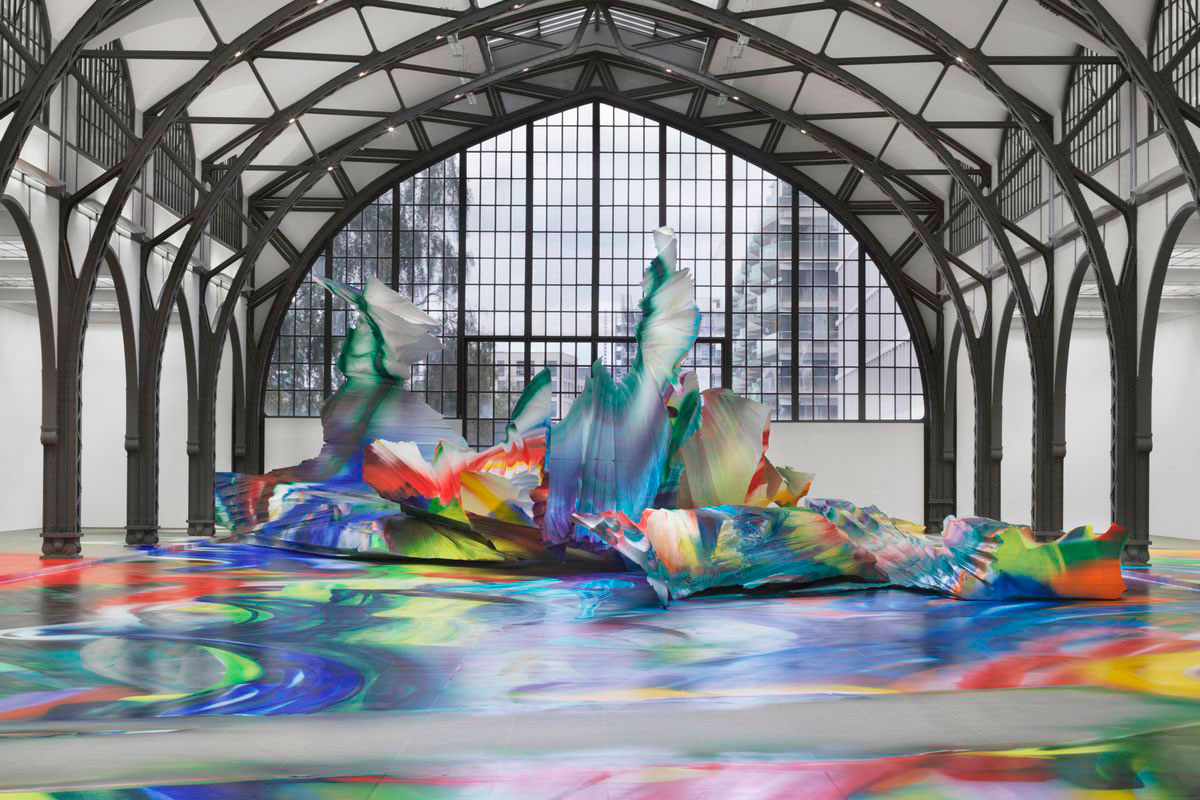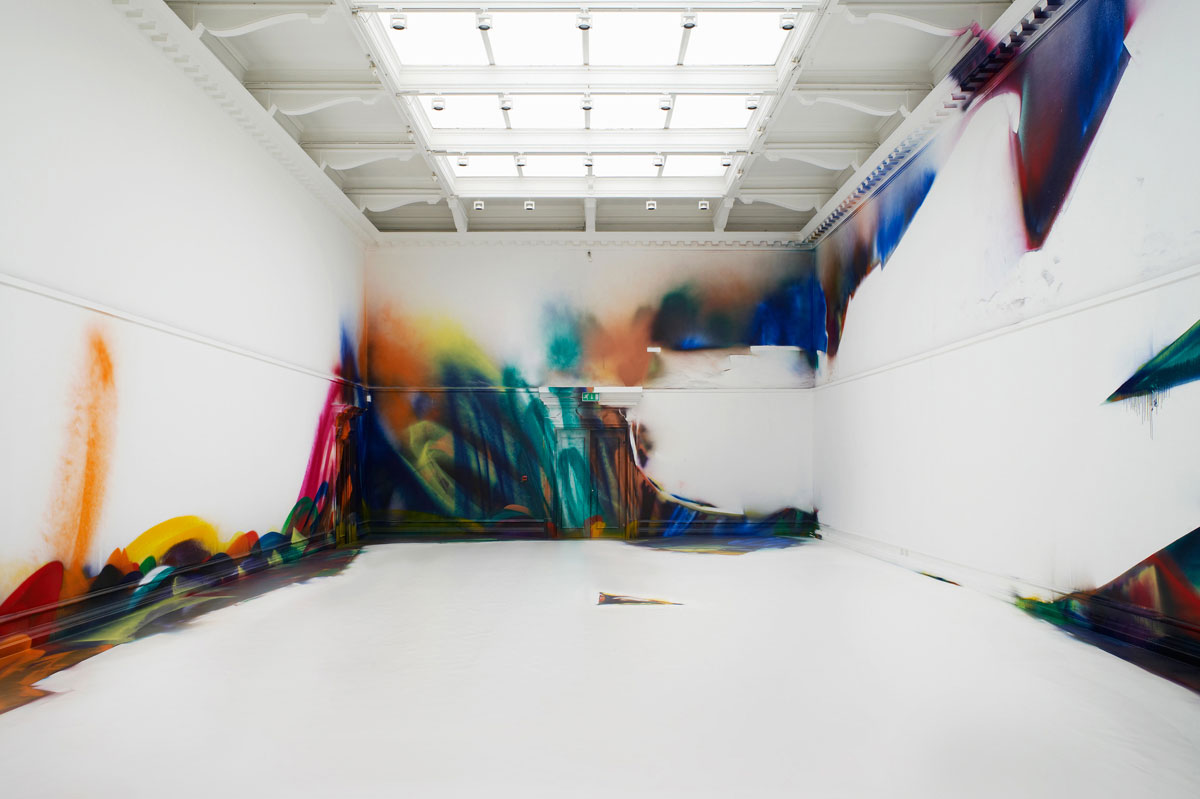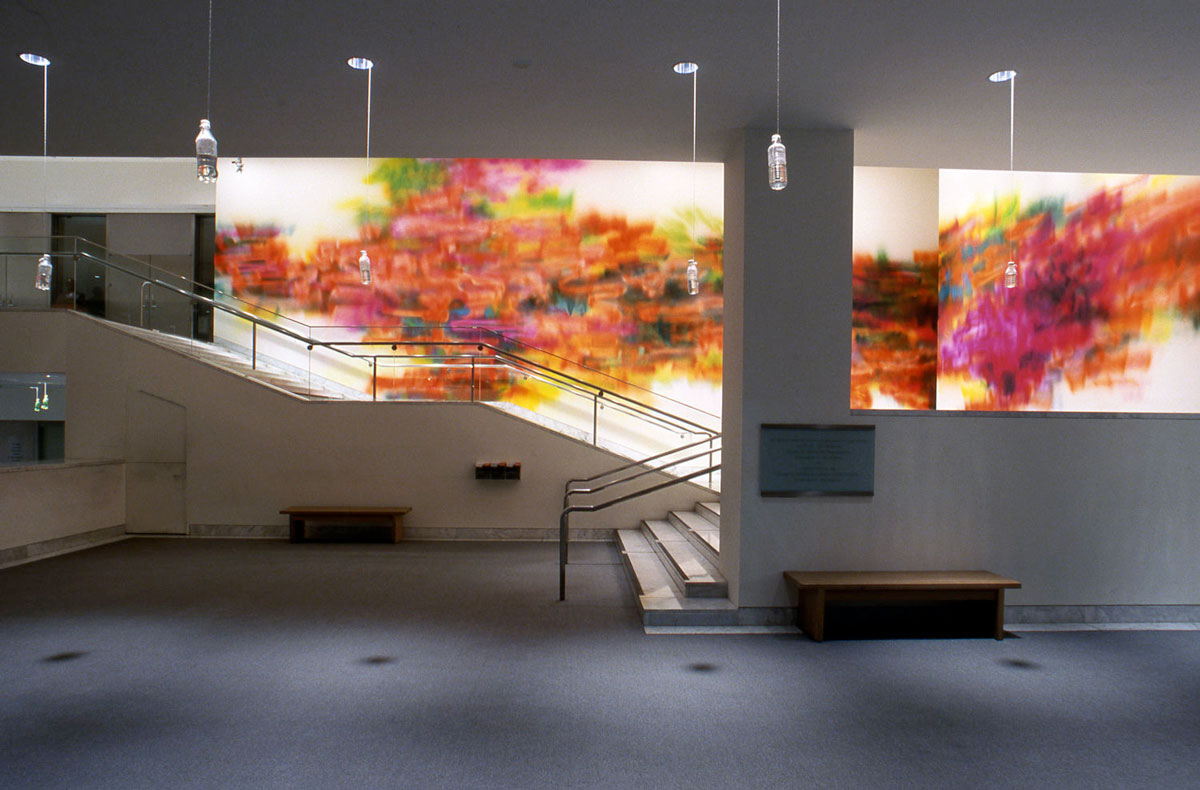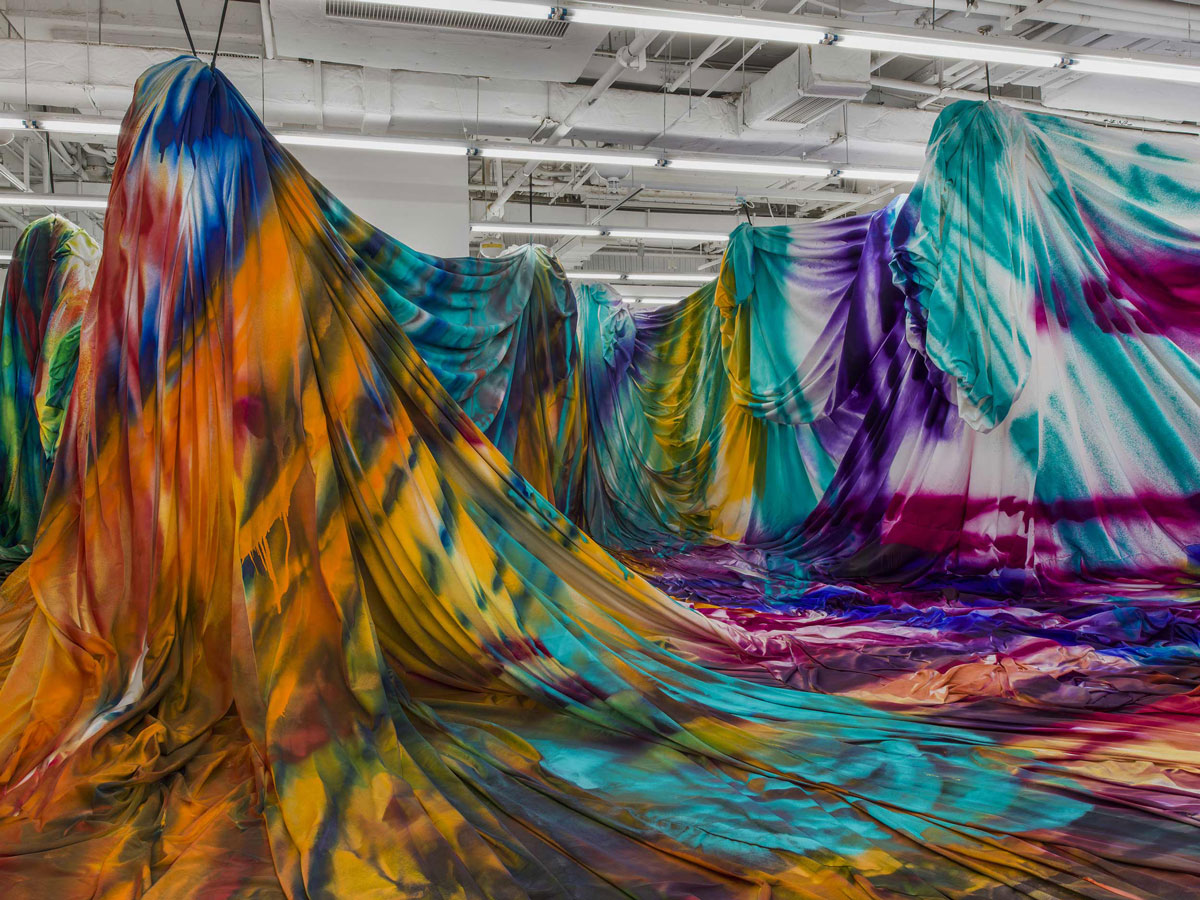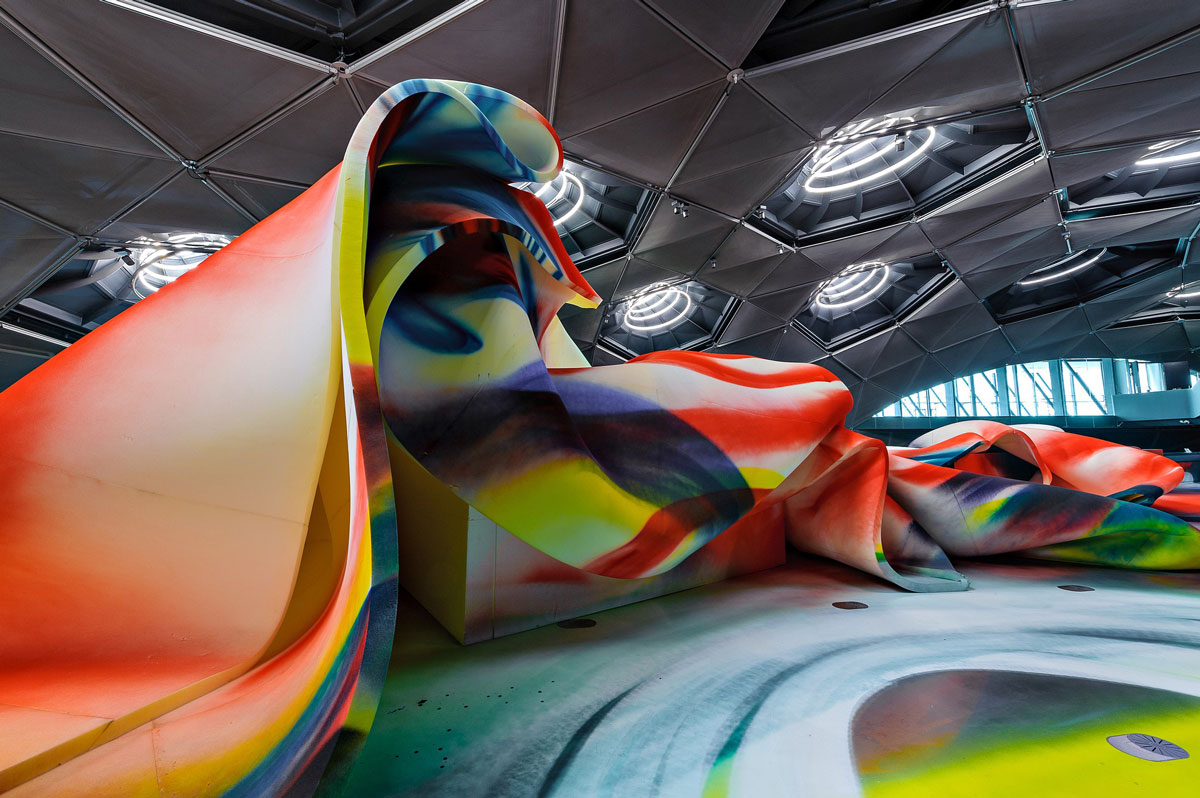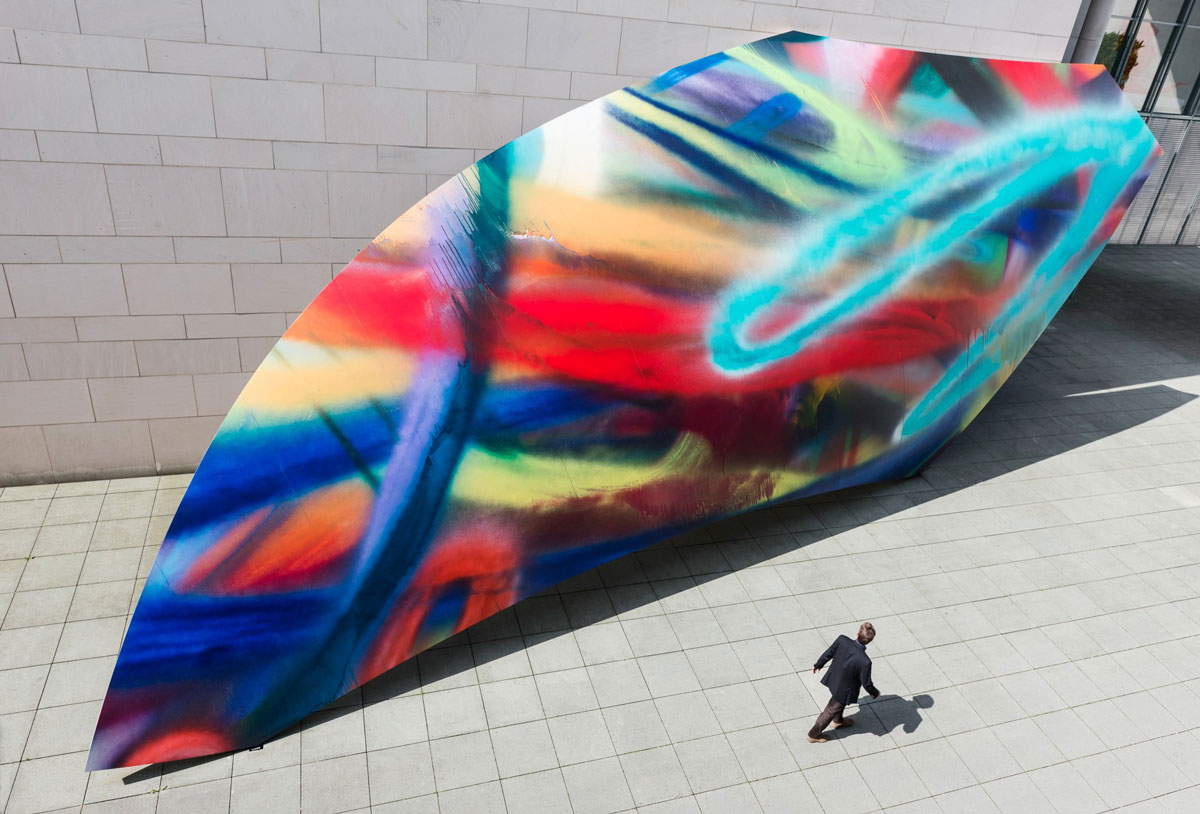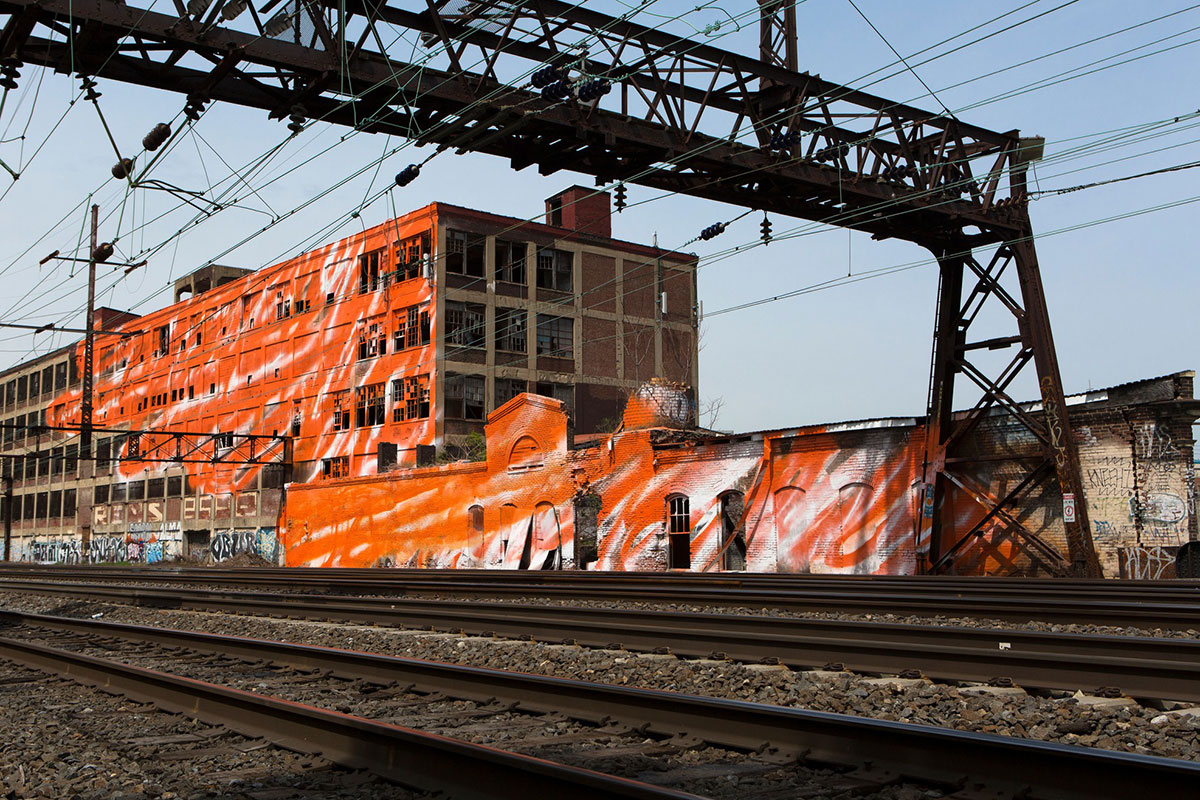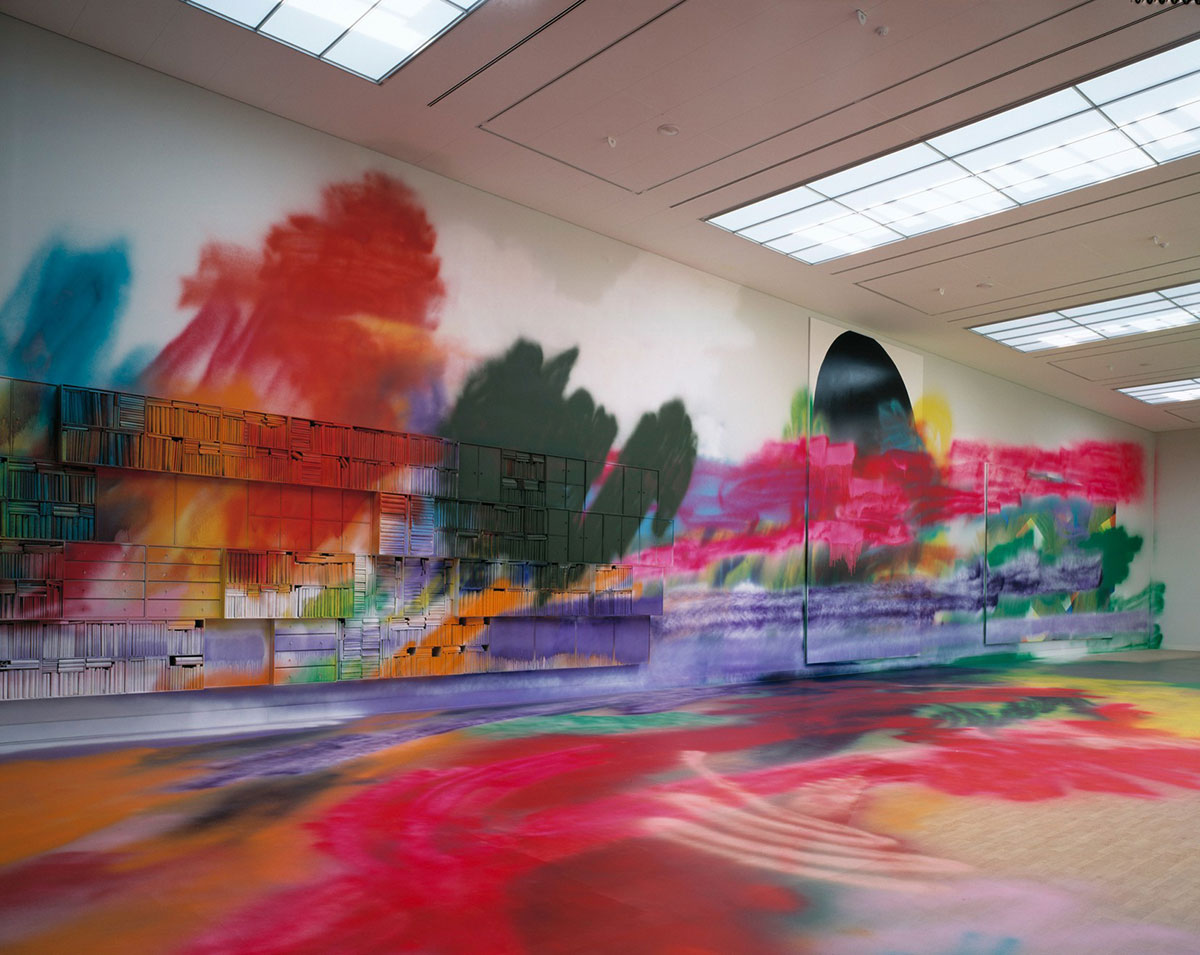TRACES: Katharina Grosse
 Today is the occasion to bear in mind Katharina Grosse (2/10/1961), internationally recognised for her bold, haptic paintings and saturated use of colour. Since the late 1990s, Grosse has employed a spraying technique to attack, redefine and subvert traditional notions of painting. Her kaleidoscopic vision spills into the physical world, sweeping across walls, floors, ceilings, everyday objects and sculptural structures. This column is a tribute to artists, living or dead, who have left their mark in Contemporary Art. Through documents or interviews, starting with: moments and memories, we reveal out from the past-unknown sides of big personalities, who left their indelible traces in time and history…
Today is the occasion to bear in mind Katharina Grosse (2/10/1961), internationally recognised for her bold, haptic paintings and saturated use of colour. Since the late 1990s, Grosse has employed a spraying technique to attack, redefine and subvert traditional notions of painting. Her kaleidoscopic vision spills into the physical world, sweeping across walls, floors, ceilings, everyday objects and sculptural structures. This column is a tribute to artists, living or dead, who have left their mark in Contemporary Art. Through documents or interviews, starting with: moments and memories, we reveal out from the past-unknown sides of big personalities, who left their indelible traces in time and history…
By Dimitris Lempesis
 Born in the former East Germany, Katharina Grosse now lives and works in Berlin. Her mother was an artist who always gave her and her siblings art supplies and was very supportive of their art making. When Grosse made large paintings on exterior garage walls, her mother encouraged it. She has always loved color. “My relationship with color began in front of a mirror. Growing up in Germany in the 1970s, I loved wearing boldly colored clothes – orange trousers with a yellow shirt and green sweater” In college Grosse studied art history and English literature. She then attended the Munster Academy of Fine Arts where she experimented with spray paint on paper. She transferred to the Kunstakademie Dusseldorf where she now teaches. At age 29 she traveled to Marseille where she joined an artist’s cooperative and learned how to use a compressor and a spray gun. She came to love it. “My first spray piece was called “Inversion” in 1998. I finally had become the artist I wanted to be.” From this time on Grosse has worked with industrial spray guns instead of brushes, applying atomized acrylic paint to any available surface. In her works on canvas from the 1990s, she juxtaposed colors of various densities and temperatures, repeating vertical, transparent brushstrokes. These led to related works painted directly onto the wall, where she lined hallways and staircases in sublime fields of artificial color. Introducing the spray gun as a painting tool, she began to paint across architectural interiors and exteriors. She produced her first work, a monochrome, using this technique at the Kunsthalle Bern, Switzerland, in 1998, spray painting the upper corner of a gallery in a deep green that spread partially down two adjacent walls and onto the ceiling. In 2000 Grosse became a professor at the Kunsthochschule Berlin-Weissensee; and she taught the Kunstakademie Dusseldorf from 2010–2018. In the late 1990s and early 2000s, Grosse combined the intersecting streaks of previous works with the cloud-like forms and mists made possible by the spray gun. The in situ paintings expanded in scale as she explored the liquidity and vast reach of the medium. In 2004, at the Contemporary Arts Museum, Houston, she sprayed the gallery interior along with clothing, papers, eggs, and coins scattered across the floor; and in 2005, at the Palais de Tokyo, Paris, she hung two huge canvases on the wall: one already painted, and one blank. She painted the latter on site, as well as the wall on which it hung. She then took down the painted canvas and leaned it against the wall on the floor, leaving a blank white rectangle. “Das Bett” (2004), was a turning point, at once a destruction and a new beginning. The tailored suit, for example, which had been sprayed over, could now no longer be worn. At the same time, however, the space underwent a strange transformation. While objects have appeared in pictures since the beginnings of art, they now became the support and surface of a form of painting that was carried out on their backs. The act of painting, performed by Grosse in one sweep, left its mark as a current of energy. The spray gun replaced the brush. Both are among the painting tools regularly used by Grosse. Katharina Grosse’s painting has since continued to evolve: from the large installation at the 56th Venice Biennale in 2011 to “Asphalt and Hair” in Aarhus in 2017. If the history of painting were told along the metaphors of ‘window’ and ‘door’, Grosse’s works would be part of the latter. The difference lies in the perceptual standpoint. When we look at a window, we are faced with a different place from which we remain separate, regardless of whether we see a detail of the landscape or if its view is obscured by blinds. If, on the other hand, you face a door, you can grasp the possibility of crossing over or entering something else. In 2016, adding to a sequence of significant public commissions in the US, she created a work for MoMA PS1’s Rockaway! series at Fort Tilden in the Rockaways, New York, transforming a derelict aquatics center with sprays of red, white, and magenta. The following year, Gagosian presented Grosse’s first solo exhibition in New York, featuring major works from several interconnected suites of paintings, and one cast-metal sculpture. In these canvases, monadic forms migrate from one painting to another, appearing in new layers or fusing into clusters that advance and retreat. The paintings record Grosse’s ongoing reflections on color, density, and velocity, as well as her use of stencils applied directly to the surface throughout the painting process. In her most recent site-responsive paintings, Grosse has incorporated lengths of painted fabric, draped from the ceiling and spilling onto the floor, thus adding even more dimensionality to her immersive paintings. “The Horse Trotted Another Couple of Metres, Then It Stopped” (2018) for Carriageworks, Sydney, was comprised of more than 27,000 square feet of suspended fabric, draped, knotted and folded across and through the nineteenth century industrial architecture of the building. In “Wunderbild” (2018), for the National Gallery in Prague, Grosse produced an imposing enfilade of paintings on loose cloth, draped from the walls on two sides. Painted on the floor of her Berlin studio, “Wunderbild” creates a bridge between Grosse’s studio canvases and in situ paintings, and its aqueous fields of color are punctuated by white palimpsests of negative space. In her solo exhibition “Prototypes of Imagination”, at Gagosian Britannia Street (2018), an entire wall of the gallery was covered by a sheet of painted fabric, asserting new spatial and temporal transformations.
Born in the former East Germany, Katharina Grosse now lives and works in Berlin. Her mother was an artist who always gave her and her siblings art supplies and was very supportive of their art making. When Grosse made large paintings on exterior garage walls, her mother encouraged it. She has always loved color. “My relationship with color began in front of a mirror. Growing up in Germany in the 1970s, I loved wearing boldly colored clothes – orange trousers with a yellow shirt and green sweater” In college Grosse studied art history and English literature. She then attended the Munster Academy of Fine Arts where she experimented with spray paint on paper. She transferred to the Kunstakademie Dusseldorf where she now teaches. At age 29 she traveled to Marseille where she joined an artist’s cooperative and learned how to use a compressor and a spray gun. She came to love it. “My first spray piece was called “Inversion” in 1998. I finally had become the artist I wanted to be.” From this time on Grosse has worked with industrial spray guns instead of brushes, applying atomized acrylic paint to any available surface. In her works on canvas from the 1990s, she juxtaposed colors of various densities and temperatures, repeating vertical, transparent brushstrokes. These led to related works painted directly onto the wall, where she lined hallways and staircases in sublime fields of artificial color. Introducing the spray gun as a painting tool, she began to paint across architectural interiors and exteriors. She produced her first work, a monochrome, using this technique at the Kunsthalle Bern, Switzerland, in 1998, spray painting the upper corner of a gallery in a deep green that spread partially down two adjacent walls and onto the ceiling. In 2000 Grosse became a professor at the Kunsthochschule Berlin-Weissensee; and she taught the Kunstakademie Dusseldorf from 2010–2018. In the late 1990s and early 2000s, Grosse combined the intersecting streaks of previous works with the cloud-like forms and mists made possible by the spray gun. The in situ paintings expanded in scale as she explored the liquidity and vast reach of the medium. In 2004, at the Contemporary Arts Museum, Houston, she sprayed the gallery interior along with clothing, papers, eggs, and coins scattered across the floor; and in 2005, at the Palais de Tokyo, Paris, she hung two huge canvases on the wall: one already painted, and one blank. She painted the latter on site, as well as the wall on which it hung. She then took down the painted canvas and leaned it against the wall on the floor, leaving a blank white rectangle. “Das Bett” (2004), was a turning point, at once a destruction and a new beginning. The tailored suit, for example, which had been sprayed over, could now no longer be worn. At the same time, however, the space underwent a strange transformation. While objects have appeared in pictures since the beginnings of art, they now became the support and surface of a form of painting that was carried out on their backs. The act of painting, performed by Grosse in one sweep, left its mark as a current of energy. The spray gun replaced the brush. Both are among the painting tools regularly used by Grosse. Katharina Grosse’s painting has since continued to evolve: from the large installation at the 56th Venice Biennale in 2011 to “Asphalt and Hair” in Aarhus in 2017. If the history of painting were told along the metaphors of ‘window’ and ‘door’, Grosse’s works would be part of the latter. The difference lies in the perceptual standpoint. When we look at a window, we are faced with a different place from which we remain separate, regardless of whether we see a detail of the landscape or if its view is obscured by blinds. If, on the other hand, you face a door, you can grasp the possibility of crossing over or entering something else. In 2016, adding to a sequence of significant public commissions in the US, she created a work for MoMA PS1’s Rockaway! series at Fort Tilden in the Rockaways, New York, transforming a derelict aquatics center with sprays of red, white, and magenta. The following year, Gagosian presented Grosse’s first solo exhibition in New York, featuring major works from several interconnected suites of paintings, and one cast-metal sculpture. In these canvases, monadic forms migrate from one painting to another, appearing in new layers or fusing into clusters that advance and retreat. The paintings record Grosse’s ongoing reflections on color, density, and velocity, as well as her use of stencils applied directly to the surface throughout the painting process. In her most recent site-responsive paintings, Grosse has incorporated lengths of painted fabric, draped from the ceiling and spilling onto the floor, thus adding even more dimensionality to her immersive paintings. “The Horse Trotted Another Couple of Metres, Then It Stopped” (2018) for Carriageworks, Sydney, was comprised of more than 27,000 square feet of suspended fabric, draped, knotted and folded across and through the nineteenth century industrial architecture of the building. In “Wunderbild” (2018), for the National Gallery in Prague, Grosse produced an imposing enfilade of paintings on loose cloth, draped from the walls on two sides. Painted on the floor of her Berlin studio, “Wunderbild” creates a bridge between Grosse’s studio canvases and in situ paintings, and its aqueous fields of color are punctuated by white palimpsests of negative space. In her solo exhibition “Prototypes of Imagination”, at Gagosian Britannia Street (2018), an entire wall of the gallery was covered by a sheet of painted fabric, asserting new spatial and temporal transformations.


